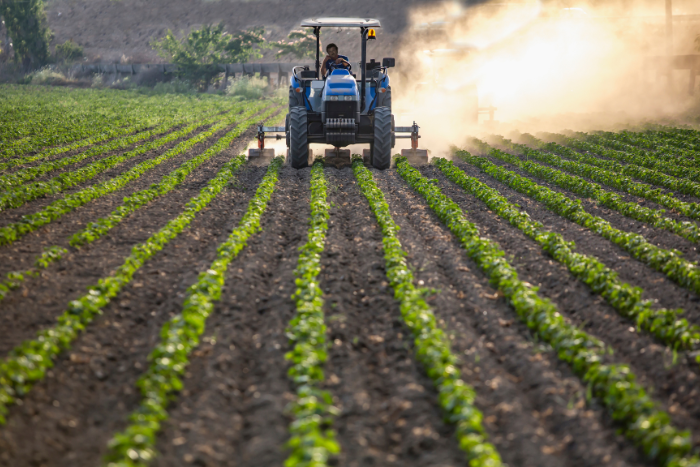Emissions of nitrous oxide—a potent greenhouse gas— grew 40% from1980-2020, greatly accelerating climate change, says the report
India is the world’s second-highest nitrous oxide emitter, second only to China, according to a new report by the Global Carbon Project. Emissions of nitrous oxide (N2O)— a greenhouse gas more potent than carbon dioxide or methane— continued unabated between 1980 and 2020, a year when more than 10-million metric tons were released into the atmosphere primarily through farming practices.
N2O emissions from human activities have increased by 40% in the past four decades. The report listed the top 10 nitrous oxide emission-producing countries. They are: China, India, the United States, Brazil, Russia, Pakistan, Australia, Indonesia, Turkey, and Canada.
Moreover, anthropogenic N2O emissions from four emerging economies (China, India, Brazil, and Turkey) have more than doubled their emissions relative to 1980.
The study looked at global nitrous oxide emissions and sinks and is produced by a team of 58 researchers from 55 organisations in 15 countries.
The report said that atmospheric concentrations of N2O, the third most important greenhouse gas, are increasing faster than predicted by the Intergovernmental Panel on Climate Change (IPCC) emission scenarios. The concentration reached 336 parts per billion in 2022, a 25% increase over pre-industrial levels that far outpaces IPCC predictions.
While global carbon dioxide emissions from human activities (fossil fuel and land use change) have been rather stable over the past decade, global N2O emissions continue to rise, largely due to production of food, the report added.
Agriculture: The leading cause behind nitrous oxide emissions
The researchers examined data collected around the world for all major economic activities that lead to nitrous oxide emissions and reported on 18 anthropogenic and natural sources and three absorbent “sinks” of global nitrous oxide.
Agricultural production accounted for 74% of human-driven nitrous oxide emissions in the 2010s – attributed primarily to the use of commercial fertilisers and animal waste on croplands. Agricultural emissions reached 8 million metric tonnes in 2020, a 67% increase from the 4.8 million metric tonnes released in 1980.
The report found that in 2020 and 2021 nitrous oxide flowed into the atmosphere at a faster rate than at any other time in history. On Earth, excess nitrogen contributes to soil, water, and air pollution. In the atmosphere, it depletes the ozone layer, and exacerbates climate change.
The world’s farmers used 60 million metric tonnes of commercial nitrogen fertilisers in 1980. By 2020, the sector used 107 million metric tonnes. That same year, animal manure contributed 101 million metric tonnes for a combined 2020 usage of 208 million metric tonnes.
The unfettered increase in a greenhouse gas with a global warming potential approximately 300 times larger than carbon dioxide, presents dire consequences for the planet. In the US, agricultural emissions continue to creep up, while industrial emissions have declined slightly, leaving overall emissions rather flat.
How to curb nitrous oxide emissions ?
“Nitrous oxide emissions from human activities must decline in order to limit global temperature rise to 2°C as established by the Paris Agreement,” said the report’s lead author, Hanqin Tian, the Schiller Institute Professor of Global Sustainability at Boston College. “Reducing nitrous oxide emissions is the only solution since at this point no technologies exist that can remove nitrous oxide from the atmosphere.”
According to the report, better agricultural practices involving the application of animal manure and nitrogen fertilisers will aid in addressing and lowering greenhouse gas emissions and water pollution.
Tian stated that in order to focus mitigation efforts on high-emission areas and economic activity, more regular assessments are required. If the goals of the Paris Agreement are to be met, a more thorough inventory of sources and sinks will be needed.
There’s hope as some countries have seen success implementing policies and practices to reduce nitrous oxide emissions, added the report. The EU, Japan and Korea have successfully reduced anthropogenic nitrous oxide emissions over the past decades and emissions in China have been declining for the past five years owing to increased nitrogen use efficiency.
About The Author
You may also like
Rains Lash South India as Early Cold Wave Grips Central and Northern India
India launches National Red List Assessment to map extinction risks of 11,000 species
At least 10 dead in heavy rain in Maharashtra, Mumbai crosses 3000 mm threshold
Extremely heavy rain flood Punjab, over hundred killed, 2.5 million forced to flee
Very heavy rainfall continues in North India, Himachal, J&K and Uttarakhand worst hit

